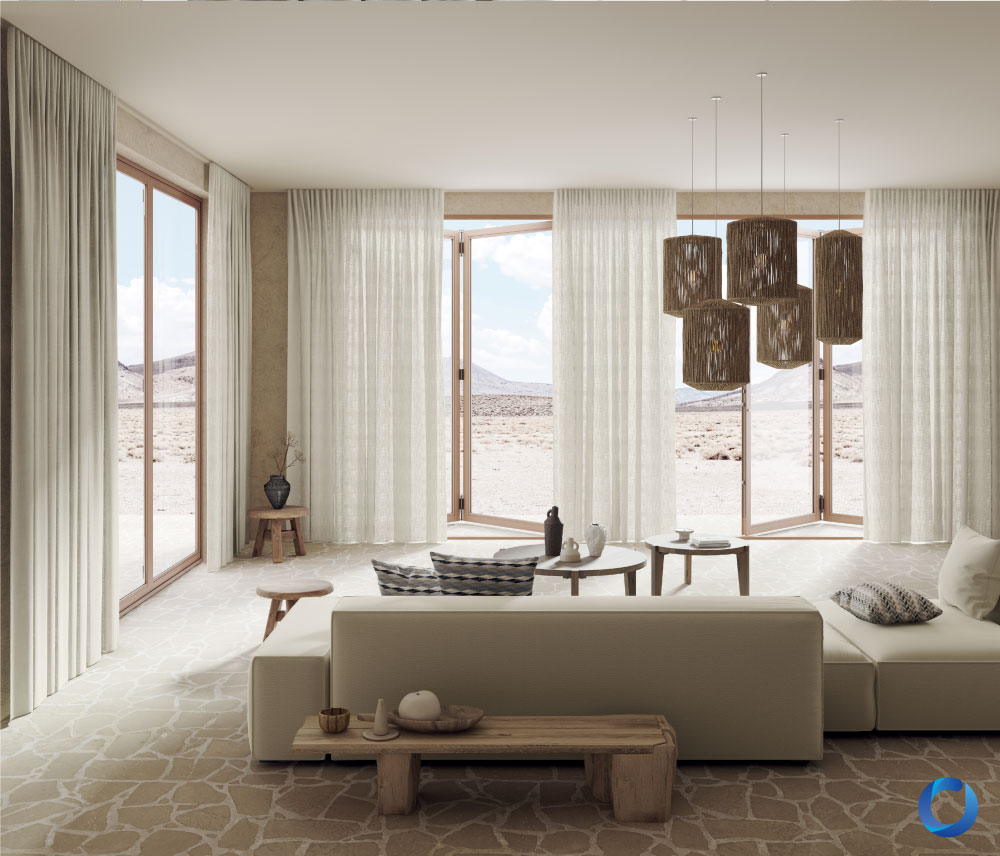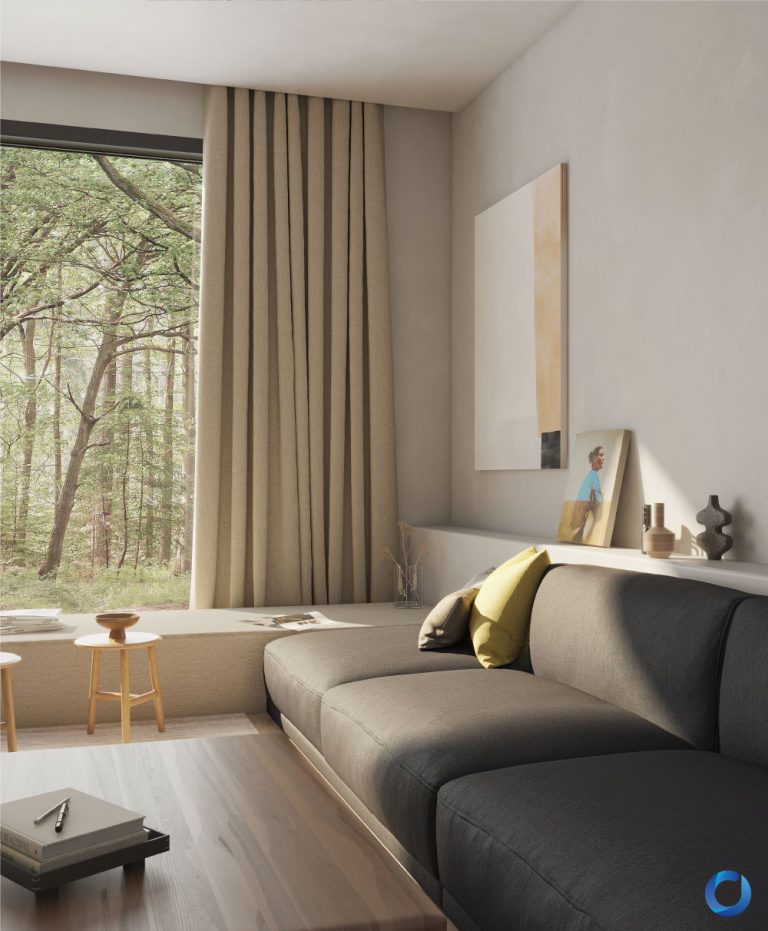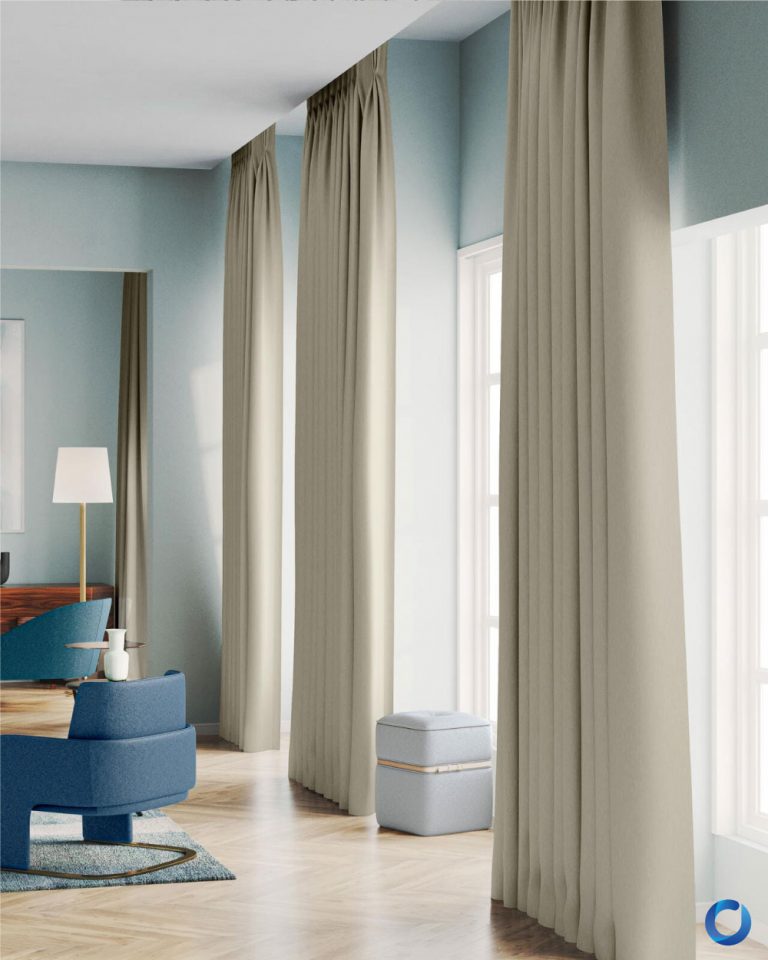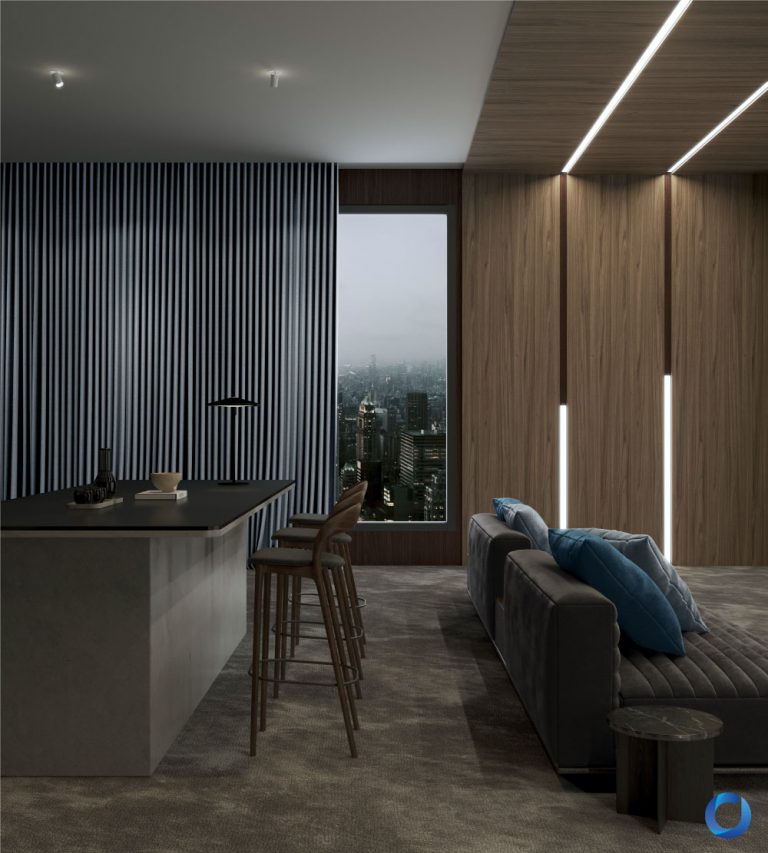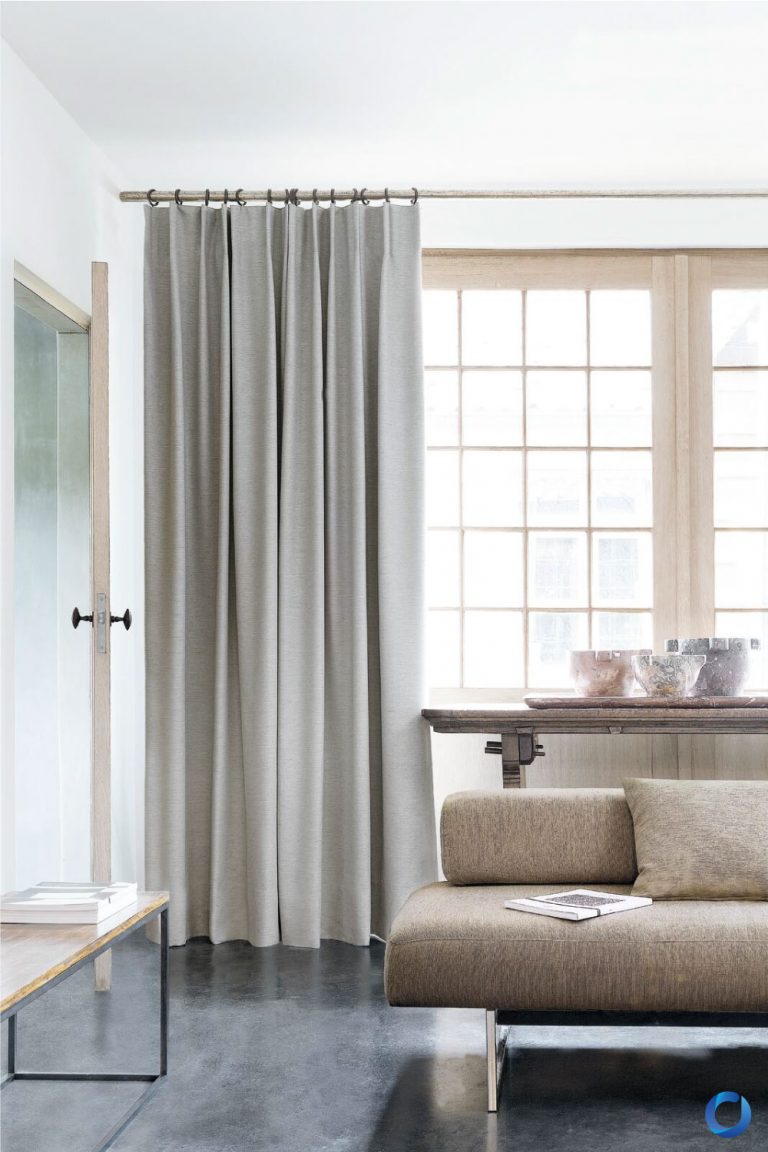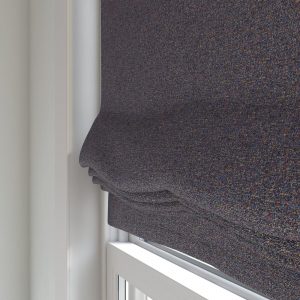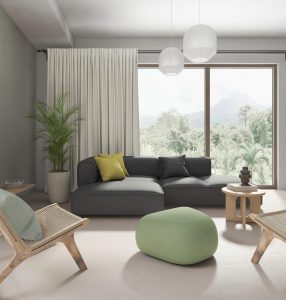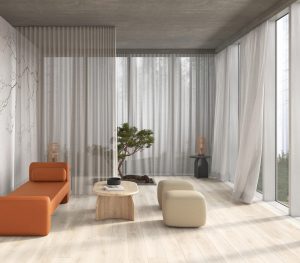
The Essential Distinction
Global architecture and furniture tend to differ from each other in various, obvious ways. One subtle difference you might have noticed while visiting others’ homes is their interchangeable use of curtains or blinds, sometimes having both, separated in different spaces or floors of their environment; a person could choose to mount blinds in their private bedrooms while enjoying a large, cascading set of curtains for the living room window downstairs, and vice versa.
Curtains. Blinds. Both new and experienced house owners typically go for the first option without any awareness to consider the latter. Anecdotally, the demographic more particular towards their distinction are perhaps the Europeans, especially popular with Spaniards and Dutch citizens. It is also prominent in Japanese and Taiwanese interiors, and continues to diversify in designs throughout the South Asian regions. Wherever you may wander, these furnishings are analogous, even if they are not often subjected to scrutiny. With the year being 2024, let’s face the music: what’s the difference between curtains and blinds, and more importantly, why does it matter?
For starters, curtains are defined by a variation of fabric thinly separating the room, sunlight, and the windows. Curtains are installed on the walls above the glass, attached to a horizontal pole or rod, and can be parted either by dragging it along the side and then tied back, or remain as they are in position if no strong winds come and ruffle them too much.
Blinds, on the other hand, consist of slats that can be made of wood, fabric, plastic, or even metal. They are bound together by a ladder-like grid which not only acts as structural support, but is integral to their function. They are similar to shutters or louvres in design, but share a curtain’s purpose of natural light control. A key dissimilarity regarding how blinds operate is the use of pull cords, which affects how much light is allowed to enter the space.
With this generalised distinction of curtains and blinds in mind, we can now proceed with the elaborate essentials that will ensure you are better informed on what is more appropriate for your ideal home-style, if not just as a fun introduction of an alternative to the standard curtain.
Curtains versus Blinds: It’s Worth Reconsidering
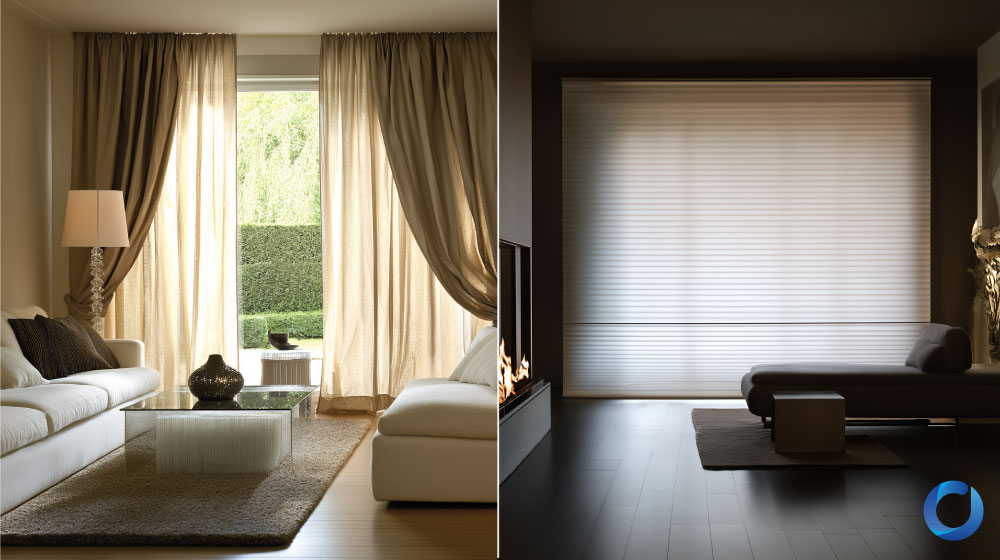
Here, the characteristics of curtains and blinds will be compared and contrasted for a practical list of considerations.
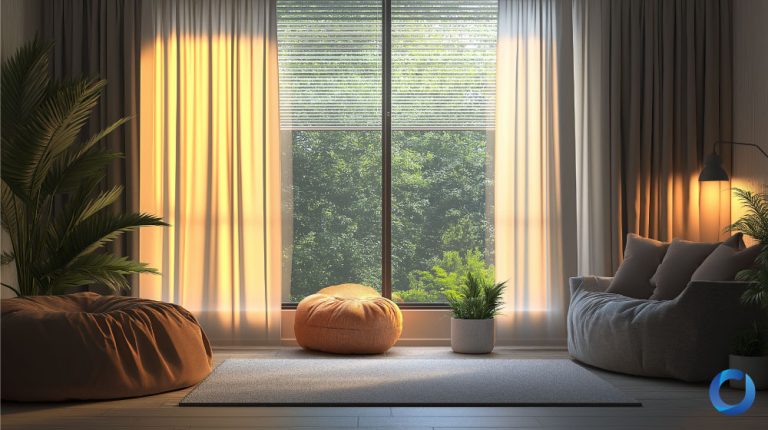
Cost
Pricing matters in the climate of market fluctuations, affecting even the niche economy of curtains and blinds due to the involvement of fabric and related material production. For the ordinary buyer who turns to the minimalist but reliable trends displayed in Sweden’s phenomenal IKEA, a simple set of curtains may start anywhere from as low as RM15 steadily rising up to a cut-off of RM299, while scrolling through their blinds catalogue yields a broader range in pricing, averaging from RM70 to RM799. While the prices of IKEA alone are certainly not representative of standard pricing across all other home and furniture stores, its pricing module can be compared with a local, Malaysian brand, such as MR.DIY. From our beloved hammer mascot store, curtains are priced from plus RM20 to RM50, whereas its blinds, limited in options as they are, range in costs from RM60 to RM110.
While the gap between an international and local store’s prices are instantly noticeable, the more important trend is that blinds are more expensive than curtains, which is likely a discovery for some given it is believed that curtains, which are dependent on quality fabric, should instead be much more costly than blinds. As it is, you’ll find that a reason behind pricing inconsistency between them lies in the materials and type of curtains or blinds that are available in stores, as it is not inaccurate nor rare to find blinds that are also exceedingly cheaper than curtains based on consideration for versatility, insurance, consumer demand, production process, and so on.
Price alone is only one factor in this journey, and not the only determinant of what you should go for. Some visitations to local furnishing stores may be necessary, which are encouraged to ensure you have a better grasp of their pricing scope within your budget.
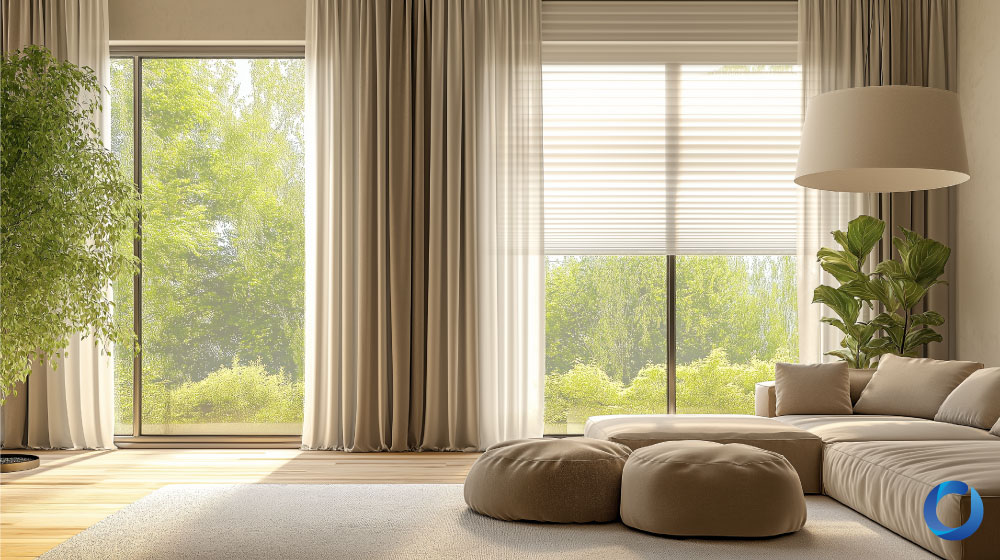
Quality and maintenance
You want to get bang-for-your-buck when it comes to furniture in general. The philosophy that sacrificing quality for a cheaper price often follows horror stories of future inconveniences roused by cutting corners, but there are just as many people who can testify that they have gotten the most use out of any other regular-priced item. For this section, we’ll take a look at the different factors contributing to the metric of what is believed to be quality. These factors are light control, noise filtration, insulation, environmental sustainability, and privacy.
When it comes to curtains, quality may seem secondary, but the type of fabric used to cut and create the set is simultaneously for aesthetic and functional purposes. Curtains offer flexibility in their transparency to perform light control; they may be transparent, translucent, or completely opaque depending on your preferences, and come in a diverse palette of colours.
Transparent and translucent curtains are typically known as lightweight or sheer curtains due to their soft materials such as linen, polyester, silk, cotton, and wool, and typically allow a healthy abundance of sunlight to illuminate your room. In contrast, recent trends have also birthed the eponymous compilation of dimming and blackout curtains, which comprises the more dense, leaden fabrics like heavyweight polyester, heavy microfiber, velveteen cotton, or an industrial blend of overall different textiles. These curtains are emphasised for their quiet, powerful elegance in rooms for those who struggle to sleep under the everlasting summer suns or piercing street lights. Here in Acacia Fabrics, our curtains are organised in tasteful fabric collections such as Aspero, Bright, Sunlight, Divinity, and are made from pure or recycled polyester tailored for variegated light control that not only guarantees a premium touch-and-feel, but committed to managing harmful ultraviolet light penetration and homely artistics.
Curtains, thanks to their nature of heavier, grounded fabric, are also great for filtering and shutting external noise out if you’re situated in an urban area, further ensuring your home life remains cosily private. They can be environmentally sustainable when subjected to the advanced technology of reusing and recombining materials. Moreover, for those who reside in the colder, dryer climates of the world, curtains effectively insulate and preserve heat in a room as their fabrics soak up sunlight faster, although it is a double edged sword for inhabitants living in already tropical and humid weather conditions. Those in tropical regions, while still using curtains in their homes, may not know that curtains actually contribute to the tough heat waves when curtains are traditionally layered in front of glass windows, the latter of which is another heat insulator. And compared to blinds, curtains also have one particularly risky characteristic, and that is they are more susceptible to being caught on fire. Materials such as cotton and linen are highly flammable, and one stray source could very well lead to a disastrous turn of events when you’re away.
Surprisingly, the existing method to mitigate and prevent both heat-related issues is fairly simple: instead of having full or mostly floor-length curtains, you can instead have shorter, half-length sets framed around the windows, which would reduce the amount of heat insulated in the room and act as standby damage control to limit the area of spreading in the case of any emergency fires. Alternatively, you could opt for fabrics that are woven with fire retardant properties, of which can also be found browsing in Acacia’s expansive catalogues.
On the other hand, blinds have a different story to tell. Blinds have more variety in type, and they all arrive with an advantage over curtains when it comes to giving homeowners complete autonomy over precisely how much sunlight they want filtered in or out of their rooms. The cord, when pulled, is a lever that controls the slants or sheet up and down meticulously, so however much light desired is fully within the realm of your hand, as opposed to merely drawing or closing curtains. This increases its range of adaptability in light control and privacy. As aforementioned, blinds are also vastly diversified than the shape and form we are accustomed to with normal curtains, ribbed along by different materials. For example, there are wooden blinds, cellular shades/blinds, aluminium blinds, roller blinds, plastic blinds – you get the gist. As expected, of course, the materials the blinds are made of impact its total cost, such as the vividly debated Roman blinds, which is built off a blend of linen blinds and components. Blinds are not strictly reliant on a rigid, grid-like appearance and can act like curtains in their own right, with one such example being panel blinds.
However, with that being said, most blinds tend to have poorer noise control in contrast to curtains, as they are often thin with an emphasis for malleable shutters instead of keeping sounds out. Even if the blinds were to be made of wood, they would not always possess the same sound-muffling quality that curtains have due to the absence of fabric. Additionally, they make for lacklustre insulators compared to curtains, although that could just mean their incredible popularity among the tropical inhabitants is justified. No heat, no problem, though, as thermal blinds are more in demand now hitherto, and are only becoming more definitive with each reiteration. For sustainability, blinds can be made of sustainable materials, but possibly less so if you’re going for cheaper, plastic blinds, which typically experience flimsiness with their cord and slats.
In regards to maintenance, curtains are generally much easier to clean than blinds. The curtain itself tends to be easily detachable from the rail before folded and sent for cleaning, and any stains patched onto the fabric are not impossible to be removed chemically or otherwise. It is not difficult to clean blinds, once again circling back to what kind of blinds the individual owns. Roller blinds, with their firm cloth lowered, can be simply cleaned by wiping down the surface. You could complete that in such a breeze with a lint roller, which explains why it remains as one of the most popular variation of blinds. This is much easier than most aluminium blinds, which have a gap between each row, requiring a feather duster to get into every nook and cranny of the blinds, and even then there is no guarantee that you would be getting all the build-up in one go, posing inconvenience when trying to clean the blinds without jostling them around all the time.
As such, it’s worth adding as well that curtains are more durable as a result in comparison; they are low maintenance, and since there is no technical mechanism involved in their function, the chances of something going wrong, such as slats getting stuck when moving blinds, should be accounted for in advance.
Space and Accomodation
Curtains usually take up more space if you like the look of their standard floor-length sets. Blinds are the more ideal alternative for smaller, cosy yet practical living spaces, but if your house boasts a combination of room sizes, feel free to install whichever option where you deem appropriate to your liking.
So, what’s right?
Well, the option rests in your hand. The enduring elegance of curtains will always be a strong contender against the versatile, compact blinds. At the end of the day, budget, quality, and space are only stepping stones to the right calling awaiting.
References
Stitched. (n.d). Curtains or Blinds? How to Choose Between Curtains or Blinds – Stitchedstitched.co.uk
Tyagi, P. J. (2021, January 4). Curtains versus Blinds: Which is Better?

